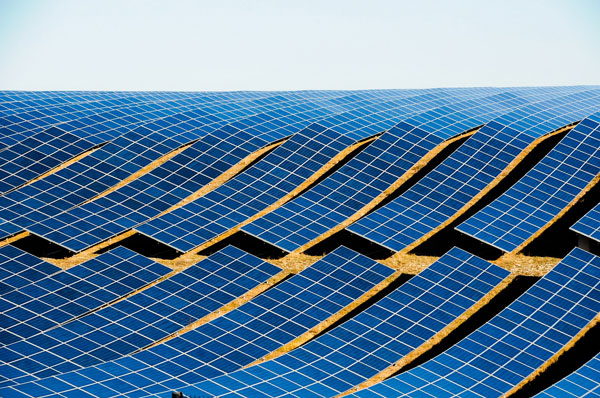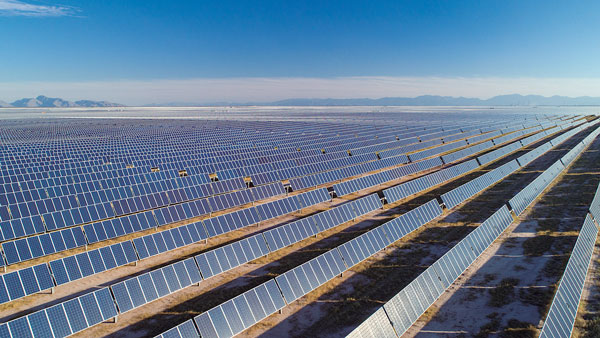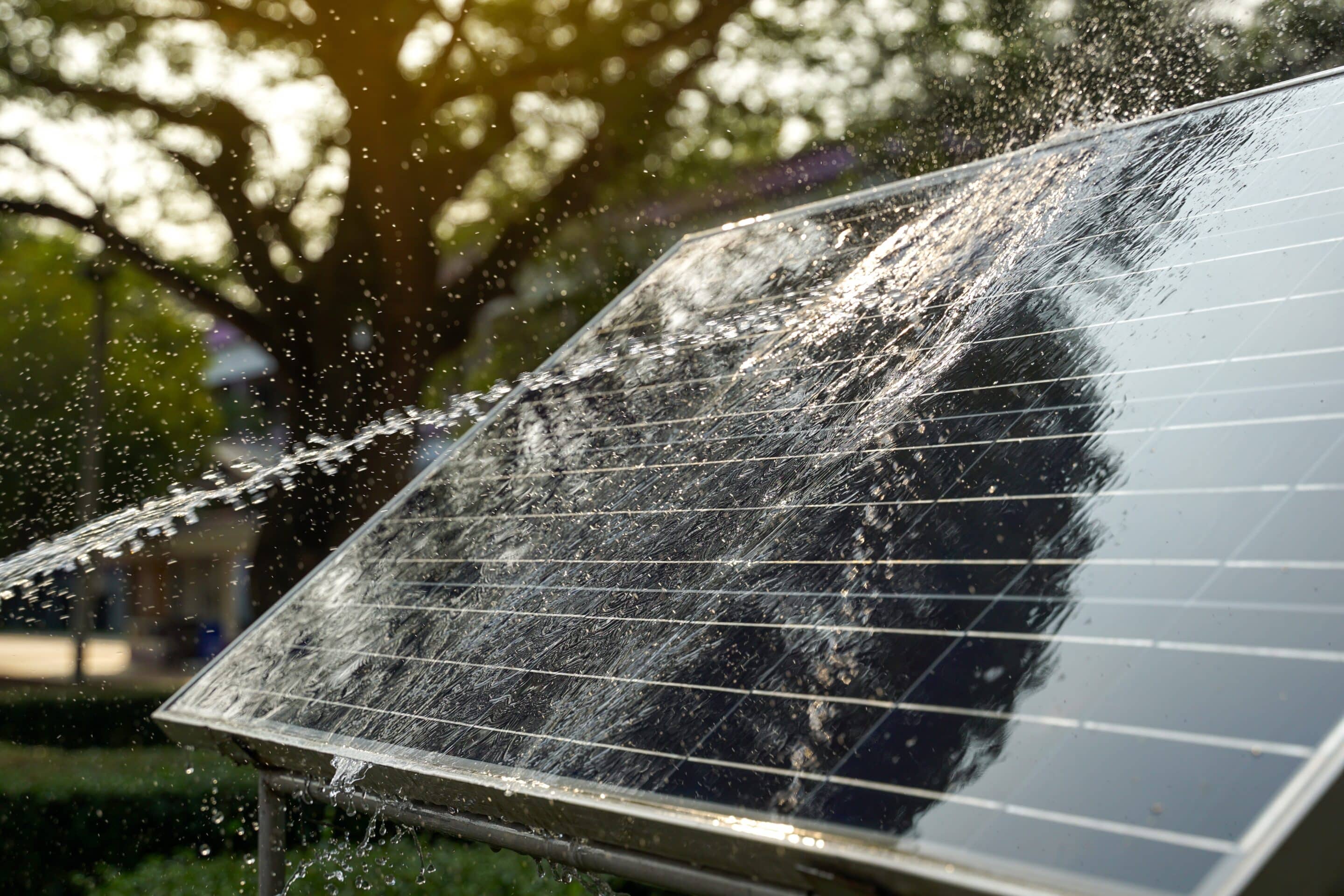Conduct a Home Energy Audit
To make the installation of solar panels more optimized, a home energy audit is the essential first step. The audit is the process through which your home’s energy use is evaluated and find possible ways to improve it. An efficient audit can help you determine how much energy your devices use and how much you can save, affecting the optimization of solar panels’ efficiency. Here are a few ways to enhance the performance of your solar panel system with a few installations.
Evaluate your heating and cooling systems, insulation, windows, lightings. Infrared cameras are one of the audit tools that can help you find energy leaks.
Secure Leaks
Leak sealing can enhance energy efficiency by up to 20%. The higher the leaks are sealed, the lower energy solar panels need to produce for the whole household.
Use Energy-Efficient Appliances
Compared to regular systems, energy-efficient appliances bring energy use to lower levels. For example, you can save up to 9 percent of your refrigerator’s energy by replacing it with an Energy Star certificate. If solar panels and energy-efficient appliances are used together, the solar panel system’s return on investment rate will be increased because less energy production is needed for the house.
Enhance the Insulation of your Household
Heating and cooling are some of the highest energy users in the house. Therefore, proper insulation can minimize the necessity to heat and cool the house. The necessary energy can be decreased up to 50 percent by portion 6 of the R-11 insulation in attic construction and recycled residual cellulose to produce an R-49 value. The lower the energy necessity levels are, the more efficient the solar panel system is.
Switch on your LED lighting
Reducing your electrical usage is one of the quickest and cheapest ways to save electricity. LEDs are making huge strides in energy efficiency, lasting at least 75 percent longer and up to 25 times longer than candles. Cut your lighting costs by at least 80% by adopting LED lighting in all areas of your home.
Use Smart Home Devices
Smart thermostats and switches can ensure home automation. According to the Department of Energy, a smart thermostat can save you about 10 percent on heating and cooling. The heating and cooling mechanism is handled by the machine depending on the temperature and weather. Advanced devices make better use of the energy produced by the panels. This allows power to focus on the most underloaded panels or to save excess for a later date.
Solar Panel Maintenance
The panel should be cleaned on a regular basis. By removing the bran, studies show that solar panels can produce up to 30% more power than left unchecked. Regular maintenance helps prevent the long-term degradation of system efficiency panels.

Choose the Right Type of Solar Panel
It is absolutely advising to decide on what type of solar panel to rely when a homeowner wants to increase energy efficiency and ER savings. Normally, there are monocrystalline, polycrystalline, and thin-film residential solar systems that are deployed on roofs. There are advantages and raisins d’être to every single type of solar system, all of which depend on the amount of roof space, the climate, and the budget. Notably, monocrystalline solar panels are the most efficient, and they can provide up to 20% efficiency. Monocrystalline solar panels perform very well in low-light circumstances, which means that the most advantageous choice is for individuals living in cloudy areas or polar conditions. However, this solar panel is the priciest, though the benefits such as longevity, as well as the ability to function in low sun conditions, essential outweigh these costs. Polycrystalline solar panels, in contrast, provide 15-17% efficiency and are less expensive. Due to the blue hue, solar fragments are molten together, which makes using polycrystalline solar panels beneficial if there is enough roof space and people live in high sunny areas.
Assess Solar Panel Quality
Brands and manufacturers are the first qualities to look for when selecting solar panels. Stick to the world’s biggest brands with the best reputation. Since no substandard solar panels are likely to be found, the Lesser, Measly, and Better ratings can be used. Everything should be backed up by a guarantee. The ten-year guarantee guarantees the solar panel’s operation during this time, while the 25-year guarantee can cover the entire thing, including service and equipment.
Consider the Installation Space
It is perfectly clear that the options are limited by the amount of roof space that people have. The space you require may be restricted by the higher efficiency of monocrystalline panels, which produce more power per square foot. However, if there is a lot of room, cheaper polycrystalline solar panels may be the ideal option.
Assess the Local Climate
The way your solar panels will work in your region will be influenced by your regional climate. If you reside in a hot location, you may not be able to use solar panels to their full potential. The good news is that the heat has its greatest impact on the effectiveness of one or the other solar panel type. Notably, solar panels do not work as well as they do in cooler regions when exposed to higher temperatures. The difference is that monocrystalline solar panels work better in higher temperatures than the other types.
Align With Your Energy Goals
I would like to stress that your objectives are required when selecting solar panels that are better for you. It is stated that monocrystalline panels are typically the most efficient option when you have a little amount of space and attempt to build as much power as possible. When you have plenty of room and cannot afford to spend a lot of money, choosing between polycrystalline panels or thin-layer panels is a great idea.
Select the Optimal Panel Placement
Finding the right location for your solar panels is vital to get the most out of them. The best placement is largely dependent on the latitude and current situation of your home. Six considerations that would help you to determine the best layout are provided below.
Analyze South and North
Install yours in the northern hemisphere, you will achieve the best results if your solar panels face south. In the southern hemisphere, solar panels have to be oriented towards the north. Aim to install your panels so that they face towards the equator. Possible obstructions that might not be immediately apparent are also important to note and assess.
Analyze Your Roof Angle and Condition
While latitude of 30 to 45 degrees is suitable for most U.S. regions, it might be a mistake to assume that that would be right for other countries. Make sure the roof has a stable angle that also suits its condition as it should probably be able to carry the weight of solar panels for the next 25-30 years.
Difference Between Roof Overhang and Edge
It is equally important to understand the difference between the overhang and the solar panel’s edge. Tilt also has to be considered and, although 30-45 degrees works best for most U.S. regions, the area’s angle and sun’s angle throughout all 4 seasons have to be taken into account.
Avoid Things That Might Cast Shade
Shadows from trees, chimneys, or anything else that can prevent sunlight from reaching your roof have severe effects on your panels’ productivity. Both advanced software and simple solar pathfinders can help you to accurately determine probable obstructions and help you to outline a proper layout. If your roof does not let you to have its solar panels there, consider ground mounts.
Ground Mounts
Ground-mounted solar panels can allow you to have your panels in the best place that would guarantee the most sun. Ground mounts can be installed into the exact angle in which the sun’s light would be harvested most effectively. Not having your panels on the roof afterwards also means that most of the dirt is not going to accumulate on the panels.
Utilize Technology
Modern weather stations can already monitor both electric consumption and heat production. If there seems to be a gap between what you generate and what you spend, you might use help of weather stations to adjust the angle of the panels. Panels that track the sun throughout the whole day can offer as much as 25 percent more energy they generate than stationary panels.
Consider Grid-Tied vs. Off-Grid Options
One of the critical decisions to make when installing a solar system is whether to have it grid-tied or off-grid. When debating the advantages of both options, it is clear that many other considerations come into play and that this decision is not purely about the installation process or intellectual curiosity. Both of these options are equally viable and allow users to accomplish their goals. Therefore, local incentives, desired autonomy, and financial considerations are some of the factors that will heavily influence the decision.
Know Grid-Tied Systems
Grid-tied systems are usually directly connected to the standard electric grid, and they commonly do not have batteries as part of the system. The setup’s primary benefit lies in its simplicity and the associated lower costs. Most grid-tied structures are capable of drawing power from the standard grid when the solar panels are not producing enough electrical energy. Conversely, surplus energy generated when a house uses less power than the system produces can be transmitted back to the grid. When this happens, net metering occurs, and the household may receive credit for reducing its monthly electric bill.
As for the advantages, one of the most prominent is superior ROI due to lower costs and net metering. Moreover, while batteries are an essential weakening component in many solar systems, it is not the case with these systems, further enhancing these advantages. The residential systems used in California and other states typically have warranties of 25 years, and most systems last at least 30, or even 40, years.
Explore Off-Grid Systems
Off-grid systems, as the name implies, are separate from the standard municipal power grid, and they usually have batteries to store electricity when the sun shines. It is optimal for places with poor access to the grid or heavy penalty fees for working independently. The critical advantage of this setup is that no external company can disrupt your energy source. The downside is that it can require up to $100,000 worth of batteries connected to your solar panels, and this large investment costs prohibit the use of off-grid systems in most select cases. If planning to establish an off-the-grid house, learners will need to make sure that their electrical systems only use energy that their setup can generate. It is possible to make it feasible and sustainable due to the numerous energy-saving measures, such as LED lighting or using propane for heating and cooking, and efficient appliances. Other factors that would affect the decision include local incentives or regulations. Many locations have substantial rebates or tax credits for having such a system in place. In other cases, it would be restricted by local by-laws or codes. For example, Ontario does not permit homeowners with an adjacent natural gas line to build off-the-grid facilities. In conclusion, for the location in question, it will likely be more useful to opt for a grid-tied solution due to the largely unnecessary expenses of the batteries.
Evaluate Storage Solutions
Solar panel systems are better than ever and can now provide you with a substantial amount of electricity. What you need to pay special attention to in case you decide to generate solar power either with a help of an off-grid system or a hybrid system, is the storage solution.
Type of Battery Is Essential to Choose Right
For present-day solar systems, lithium-ion batteries are very popular for a variety of reasons: they are highly efficient, durable, and cost reduction makes them more attractive. It also has to be noted that, since lead-acid batteries have become outdated, lithium-ion cells are able to provide higher depth of discharge and are characterized by the longer cycle life. Specifically, lithium-ion battery may give you 90% of its stored energy, while lead-based types may only provide 50-60%.
How to Define Capacity of Solar Battery
The energy consumption by your appliances and electric devices, including also various other facilities in your house such as the cooling or heating system, should be calculated. What you also have to keep in mind is: everything has to be calculated on time, that is during a 24-hour period. The primary reason why such a calculation is crucial for storage batteries is the prevention of deep discharges since they decrease battery lifespan. If to provide an example: a normal home would probably require 10 kWh of storage in order to cover its evening-night usage.
Battery Life and Warranty
The difference and the period during which the battery may be covered by warranty is going to vary and have great value. There is a guarantee attached to present-day solar batteries, stating that from 1000 to several thousand cycles or after some fixed period of time, the battery is going to be able to serve for the off-grid user. For instance, the contract for most lithium-ion batteries is 10 years or even more.
Is Your Solar Battery Expandable
You should also consider the expandability, which is defined as the opportunity to add more solar panels or more batteries to your energy storage solution.
You should also use your batteries together with system management. systems. They enhance both charging and discharging cycles, which prolongs batteries’ lifespan and improves the system’s efficiency on the whole by not letting the battery be overused. Overall, smart management systems can increase batteries’ efficiency by 15%.
Plan for Future Expansion
In order to ensure long-term satisfaction and efficiency, you should anticipate your future energy needs and plan for the potential expansion of your solar panel system. There are several steps you could consider to achieve this.
Assess Your Future Energy Needs
Assess the potential changes in your energy consumption. If you are planning to buy an electric vehicle 1 or more cars, you should consider that it may use as much as an additional 2 to 4 kWh per 100 miles driven. In addition, adopting a home office or expanding your family will us increase your energy demands even further.
Design a Modular System
Consider installing a solar panel and battery storage system that is modular. Namely, plan a system that is easily expandable without changing the whole installation. Plan your initial setup so that more panels and batteries could be added in the future and make sure your inverter has enough capacity or consider a system with microinverters.
Install Extra Mounting Hardware and Wiring
When installing your initial setup, consider placing extra mounting hardware and wiring. Namely, the infrastructure is the most costly part of a solar energy system and the pre-installed extra hardware will save you up to 25% of the cost of accumulating and installing it all in the future.
Make Sure You Leave Space for the Panels
Make sure there is enough space on your roof or with at your property for your panels. In other words, you should not use all of your property with your initial setup if you anticipate it growing in the future. Doing so might mean that you have to make some expensive and extensive structural changes later.
Keep Up with the Industry Developments
Solar technology develops quickly and new technologies and efficiency improvements might present opportunities to replace some of your components. For example, as more efficient panels become available, you should consider replacing your existing with more efficient ones. The newer models are 10 to 20% more efficient on average than the older technologies.



